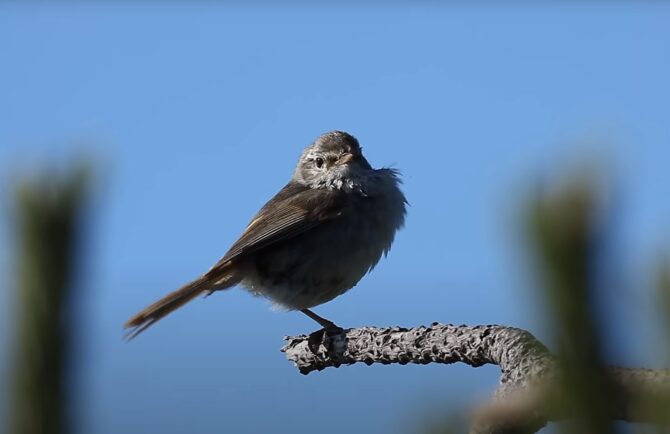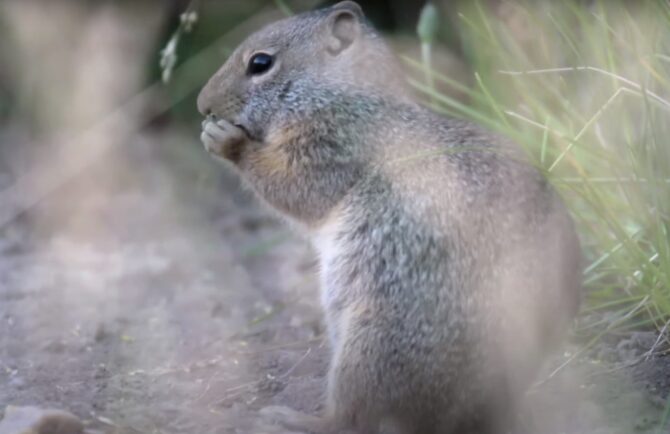From the cutest to the ugliest, The animal kingdom is full of diverse and fascinating creatures, and those that start with the letter U are no exception.
From monkeys to birds to lizards, there is a wide variety of creature that begin with this letter.
Here is our list of 12 animals that start with U, along with some interesting facts about each one.
Let’s see.
Key Takeaways
- The Urutu snake, a highly venomous pit viper, uses heat-sensing organs to detect prey in South American rainforests.
- Upland sandpipers, native to the Americas, exhibit unique jerky movements while foraging in tall grass.
- The Ural owl, a nocturnal predator in European and Asian forests, can hunt prey much larger than itself.
12. Urutu Snake
Urutu snakes, also called yarará grande, wutu, and crossed pit vipers, are native to rainforests and humid regions of Brazil, Argentina, Paraguay, and Uruguay. They are highly venomous pit vipers in the Bothrops genus, also called lanceheads.
Being pit vipers, these snakes have heat-sensing pit organs on both sides of their head, between their eyes and nostrils.
These organs help them sense opossums, small rodents, amphibians, and other warm-blooded prey in their wetland habitats.
When attacking, the aggressive snakes pierce the animal’s flesh with their large fangs and inject a tissue-damaging venom.
The female Urutu snake grows longer and heavier than males of the same species
11. Upland Sandpiper
The upland sandpiper (Bartramia longicauda) is native to North and South America, where it lives in open country areas with tall grass to hide. It spends its days walking through the vegetation, picking up insects, seeds, and grains.
This social bird forms monogamous bonds and lives communally most of the year. Look for their jerky movements on the ground, or flying high in the sky, making their rolling whistles.
Discover all the fascinating facts about the upland sandpiper, including where they live, what they eat, and how they behave.
They make jerky movements as they walk through the grass, searching for food.
10. Ulysses Butterfly
If you need only one word to describe Ulysses Butterfly, no doubt that it would be cute.
The Ulysses butterfly is a large, beautiful blue butterfly native to Australia, Indonesia, Papua New Guinea, and the Solomon Islands. It lives in the lower levels of rainforests and in suburban gardens.
The species was once endangered but has bounced back after Australians started planting more of their favorite pink flowered doughwood trees.
Today, this species is a tourism emblem for the government of Queensland, Australia.
Did you know that blue is one of the rarest colors in the animal kingdom?
9. Uaru Cichlid

Uaru cichlid is a freshwater fish native to the Upper Orinoco and the Amazon basins in South America.
The average lifespan of an Uaru is about 8 to 10 years. The fish is popular for its unique triangular shape and coloring, unlike any other fish in the cichlid family.
The Uaru is one of the least aggressive cichlids. The color of this fish changes during the spawning season.
Although native to South America, you can find Uaru species in aquariums all over the world.
The Uaru may even be able to recognize its feeders.
8. Uakari – The red face is sexual signal

Uakari is the common name for the New World monkeys of the genus Cacajao. Both the English and scientific names are believed to have originated from indigenous languages.
“The social structure of uakari monkeys is complex and dynamic, with individuals forming and breaking alliances and friendships over time” (Strier, 2000).
Uakaris are social animals and live in groups of up to 100 individuals.
“The uakari’s diet consists primarily of fruits, seeds, and leaves, but it will also eat insects and small vertebrates on occasion” (Garber and Pruetz, 2009).
They live in the Amazon rainforest. It is known for its distinctive red face and bald head, which are thought to help it regulate its body temperature. Uakaris are social animals and live in groups of up to 100 individuals.
“The red face of the uakari monkey is a sexually selected signal of health and social status” (Domb and Pagel, 2001)
7. The Umbrellabird
The umbrellabird is a type of bird that is found in the rainforests of Central and South America. It is named for its distinctive crest, which resembles an umbrella.
Umbrellabirds are known for their loud, booming calls, which can be heard up to a mile away.
According to IUCN Red List, the total population size of the Long-wattled umbrellabird is 10,000-19,999 individuals or 6,000-15,000 mature individuals.
Currently, this species is classified as Vulnerable (VU) on the IUCN Red List, and its numbers today are decreasing.
These birds finds flying difficult because of its large size, but can indeed fly short distances, although it tends to be relatively slow and clunky in the air. So, it exhibits hopping between different branches with the help of its clawed toes.
6. Urial

The urial, also known as arkars, shapo, or shapu, is a type of wild sheep that is found in the mountains of Central Asia. The urial is native to montane areas in the Pamir Mountains, Hindu Kush and Himalayas up to an elevation of 4,500 m (14,800 ft).
It is distributed from northeastern Iran, Afghanistan, Turkmenistan, Tajikistan, Uzbekistan and southwestern Kazakhstan to northern Pakistan and Ladakh in northwestern India.
It is adapted to living in rugged, rocky terrain and has a thick, shaggy coat to protect it from the cold.
Urials are social animals and live in groups of up to 100 individuals.
“The urial is able to survive in harsh, mountainous environments due to its specialized hooves and agility” (Shackleton and Shackleton, 1994).
5. Uromastyx – “Good beginner pets”
The uromastyx is a type of lizard that is found in the deserts of Africa and Asia.
It is known for its spiny tail, which it uses for defense.
Uromastyx are herbivores and feed on a diet of plants and seeds.
“The uromastyx is able to inflate its body and erect its spiny tail when threatened, making it appear larger and more intimidating to predators” (Cooper, 1994).
Leopard Gecko – friendly buddy
There are several species of uromastyx, or spiny-tailed lizards, that make good beginner pets. They are friendly, docile, relatively easy to care for, and are fun and entertaining to watch. Supplying a uromastyx with food is quite easy since you can pick up his food from a grocery store.
One of them is the Leopard Gecko.
They are commonly yellow, white, and spotted with black dots–hatchlings are striped and gradually change to the spotted appearance
This type is popular beginner’s reptile because he is a hardy and peaceful pet. These spotted geckos are quiet and easy to care for, making them ideal household pets.
4. Uguisu – “Poem reading bird”

The uguisu is a type of bird that is found in Japan. It is known for its beautiful singing voice, which is said to resemble the sound of water dripping.
Uguisu are migratory birds and spend the winter in Southeast Asia.
“The uguisu’s song is considered one of the most beautiful in Japan and is often used in traditional music and poetry” (Suzuki, 1997).
This bird is often found in poetry and literature as a symbol of the spring revival, hope, and an end to the hard (winter) times. It is also called the “spring bird” and “poem reading bird”.
3. Utonagan
The utonagan is a type of dog that is native to the United Kingdom. It is a large, powerful breed that is used for hunting and guarding.
Utonagans are intelligent and loyal dogs that make excellent companions.
“The utonagan is a relatively new breed of dog, developed in the 1980s by crossing several different breeds, including the Alaskan Malamute, the Siberian Husky, and the German Shepherd” (Coppinger and Coppinger, 2001).
| Pros | Cons |
|---|---|
| Utonagans are loving, gentle, and even-tempered, enjoying time with family. | Without proper training and clear leadership, a Utonagan may try to assert dominance. |
| Utonagans have a long lifespan, living up to 15 years, which is notable for larger dog breeds. | Higher maintenance grooming in winter: Their thick winter coat requires more frequent brushing and grooming. |
| Utonagans are very friendly and often work as therapy dogs in various settings. | They require daily walks and plenty of mental stimulation to prevent boredom and destructiveness. |
2. Uinta ground squirrel

The Uinta ground squirrel, commonly called a “chisler” and Potgut in northern Utah, is a species of rodent native to the western United States.
It is a small, burrowing animal that hibernates during the winter. They eat grasses, forbs, mushrooms, insects, and carrion (including road-killed members of its own species). Preyed on by long-tailed weasels, hawks, coyotes, badgers.
Uinta ground squirrels are important prey for a variety of predators, including hawks, owls, and coyotes.
“The Uinta ground squirrel is able to survive long periods of hibernation by lowering its body temperature and metabolic rate” (Barnes, 1989).
1. Ural owl
The Ural owl is a type of owl that is found in the forests of Europe and Asia. The name refers to the Ural Mountains of Russia where the type specimen was collected.
It is a large, powerful bird of prey that feeds on small mammals and birds. Ural owls are nocturnal and have excellent night vision.
It was reported that in total Ural owls utter about nine different calls. Their alarm call is typically delivered during territorial rounds and can be heard at up to 1,500 m (4,900 ft) away.
Ural owls also have a particularly menacing bill-snapping display which they use when feeling threatened.
This bird may have a lifespan of up to 24 years old.
“The Ural owl is a powerful hunter, able to take down prey much larger than itself, including hares and small deer” (Saurola, 1994).
Terror owls attacked people more than 50 times
Did you know that, although very rare, owls have been recorded attacking, even killing humans?
Essentially, owls can be dangerous to humans if the circumstances are right.
On 2015, a rogue owl terrorized a northern Dutch city forcing locals to arm themselves with umbrellas at night.
The massive owl was believed to be responsible for a long series of mysterious attacks over a period of a year.
According to The Guardian, the aggressive Eurasian Eagle Owl has been dubbed the “terror owl” by residents of Purmerend, north of Amsterdam.
The bird of prey is suspected of more than 50 attacks on humans, swooping silently from above and leaving many of its victims bloody and bruised. The bird even hospitalized multiple people.
On 2020, owls were reported to have attacked visitors at Friday Harbor, Washington state. At least four owl attacks were documented.
FAQ
Summary
This article introduces a group of amazing animals that start with the letter U, each with their own unique and incredible characteristics.
From the venomous Urutu snake that can sense heat, to the Ural owl that hunts at night and can catch large prey, we get to meet a whole host of fascinating creatures.
We also learn about the social Upland sandpiper, the beautiful Ulysses butterfly, and the unusual Uakari monkey with its distinctive red face.
We also showed the survival techniques of the Uinta ground squirrel and the complex social structures of the Utonagan dog.
This collection of animals not only educates us but also inspires a sense of awe and appreciation for the natural world.






